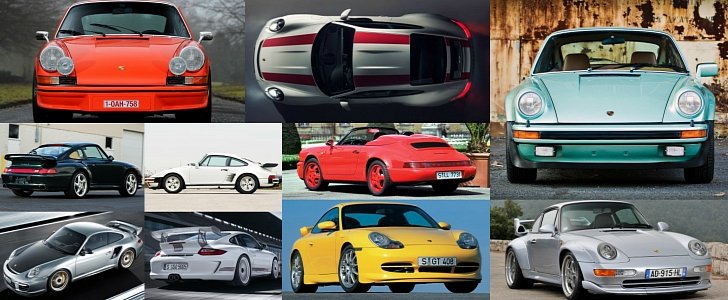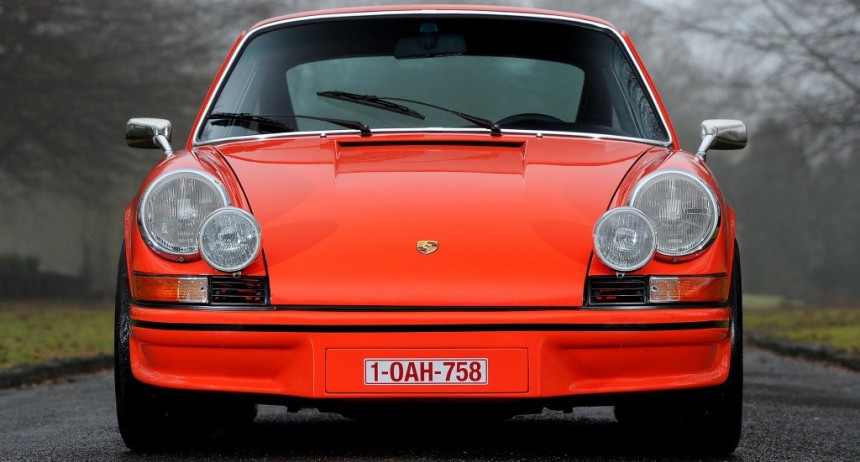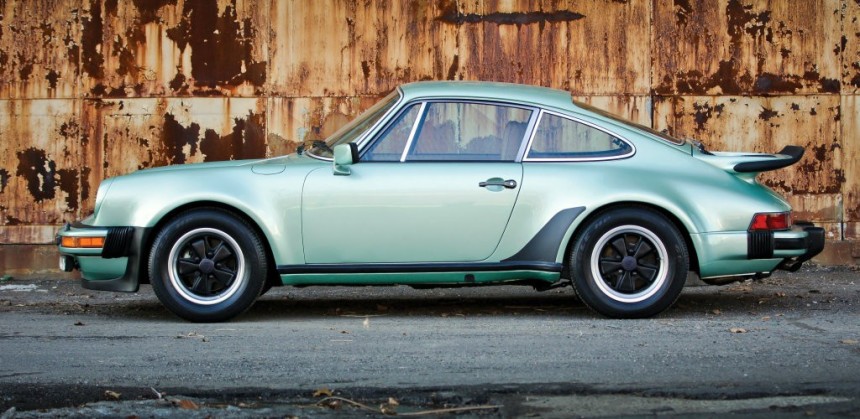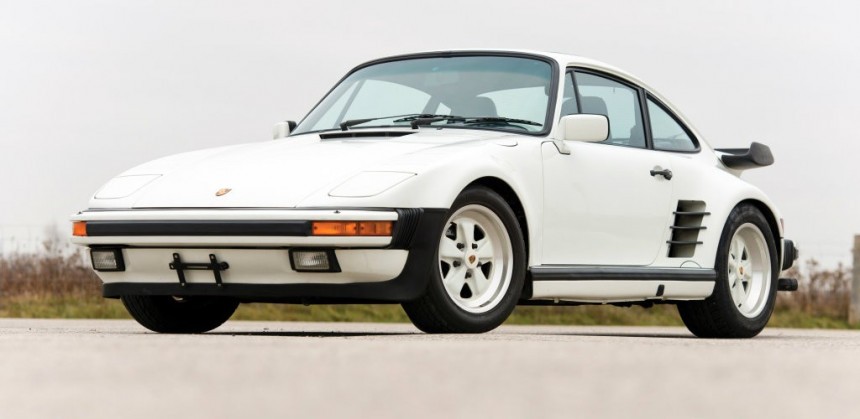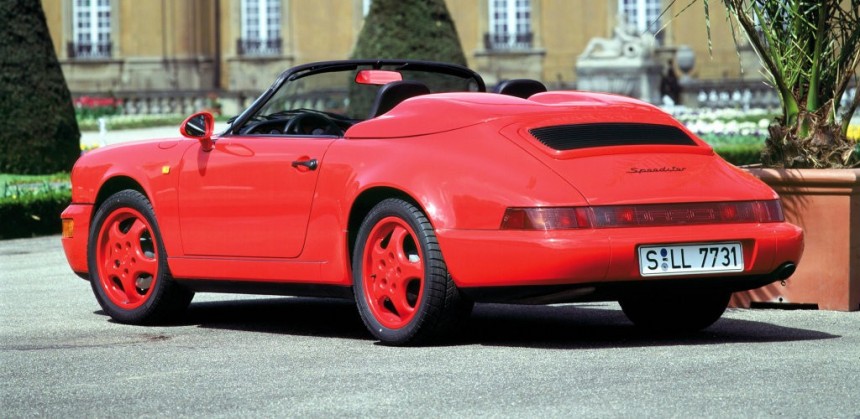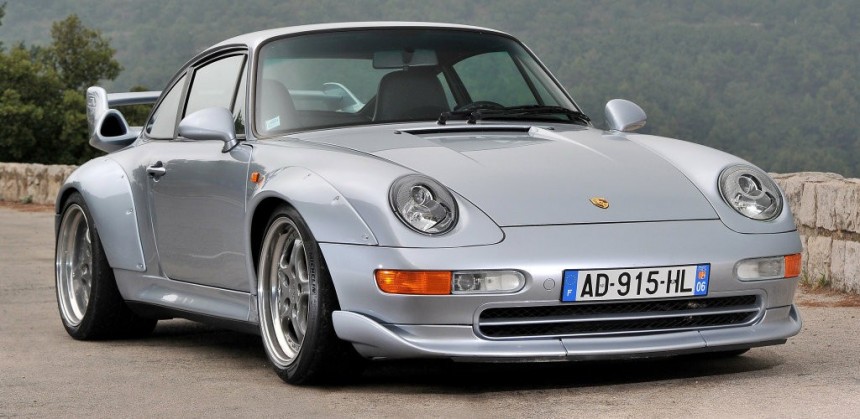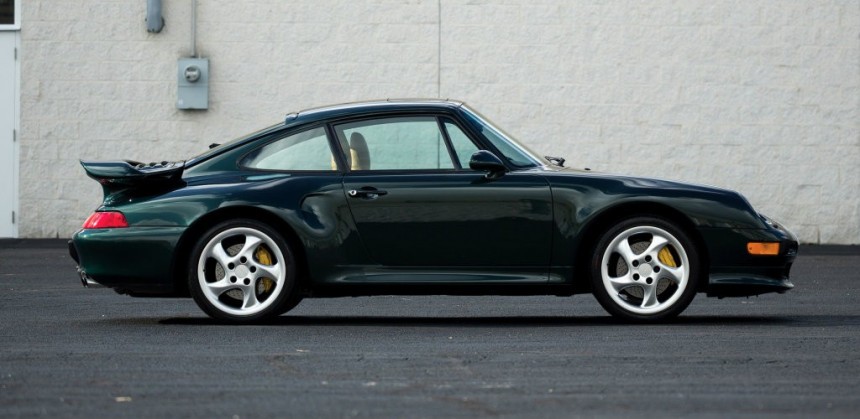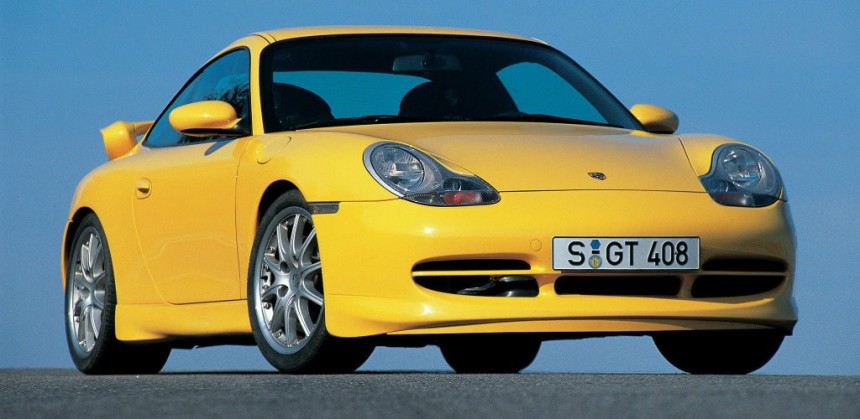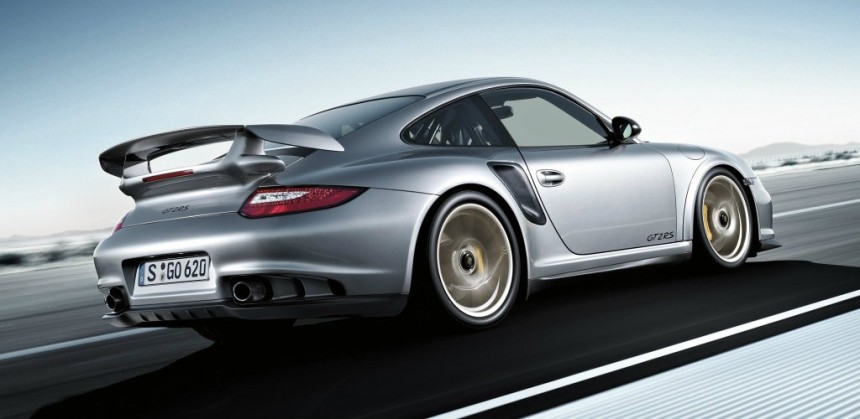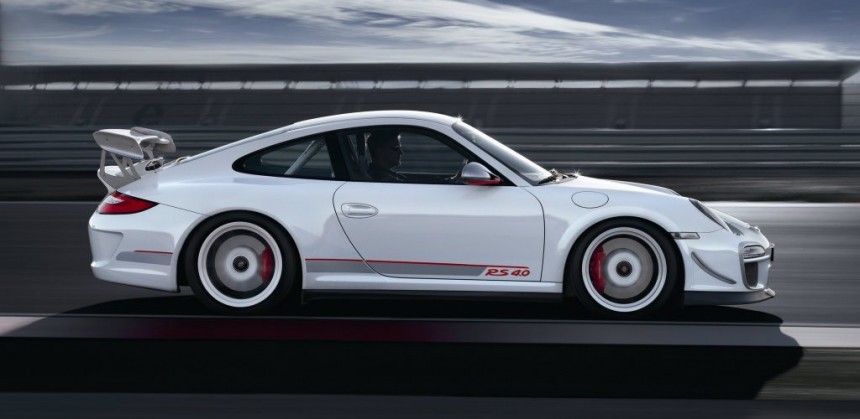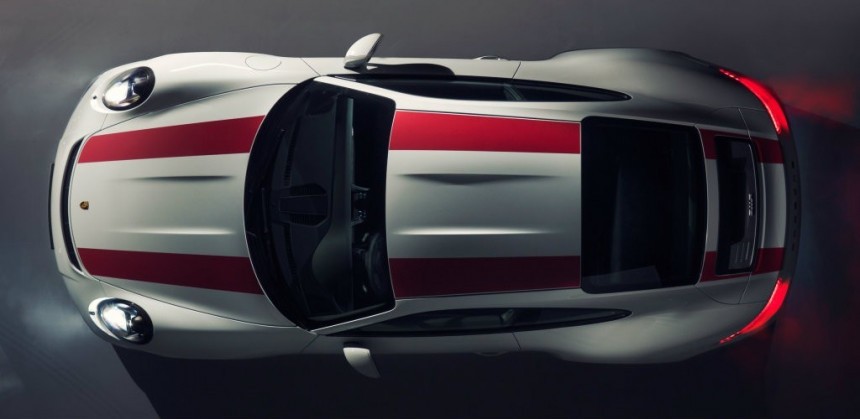Porsche. Seven letters that will send a rush of blood to the head, regardless of whether the person who hears them is a car nut or not. When you add three magical numerals to the mix, the recipe is complete. The thing is, the illustrious Porsche 911 poses a huge problem for us all because there are too many 911s out there.
Its silhouette may be the most recognizable in the industry after the Volkswagen Beetle’s contour, but the plethora of 911 models built to this day is hugely convoluted. The madness started in 1963 when the grandson of Ferdinand Porsche saw one of his design sketches come to fruition. The 911 was developed as a replacement for the Beetle-based 356, the first model in the Stuttgart-based company’s history.
Since them, 63 years have passed and countless 911 models with them. Among those, some 911s have come to be more equal than others. Ask any Porschephile out there what the most relevant 911 of them all is and chances are every one of them will give you a different answer. This happens because, as stated above, there are way too many 911s to choose from. I’ll give you a taste of that right now: the North American model overview page consists of 16 models from the 991 generation. Yup, that many.
Here at autoevolution, the 911 is revered as a hero car because the 911 deserves that status. Instead of making a top ten list according to the generation, power, or price, we’ve decided to present you ten of the coolest 911 models of all time. To keep things nice and tidy for everybody, the following list has been arranged in chronological order because telling events in the order in which they happened makes the most sense, isn’t that so?
Any reader out here listening to Jamiroquai? Those who aren’t acquainted with Jay Kay’s music, check out the video for White Knuckle Ride. Yes, that’s a 911 Carrera RS 2.7 chased by a helicopter along a winding desert road. It’s no wonder he chose the RS 2.7, though. After all, the original Rennsport is considered to be the Holy Grail of 911s.
Compared to a standard 911 S, the RS had a larger and more powerful engine (210 PS from 2,687 cc), better suspension, larger brakes, wider wheels, bigger fenders, less weight, and, of course, the iconic ducktail spoiler. Porsche made a total of 1,580 units of the thing, a number that exceeds the 500 vehicles made to qualify for FIA Group 4 racing.
Care to guess how much one of these babies in street-legal form is worth in this day and age? Chassis number 9113600856 sold for $550,000 at Retromobile, but prices can go as high as $1,402,500 for chassis number 9113600883. The latter example still wears the original paint and it is one of the first 500 homologation cars built by the automaker.
The 930 Turbo has a reputation of being a widowmaker. This label is a synonym for the 930 Turbo because so much weight hanging on the rear axle and primitive turbo tech equals capricious handling characteristics. By comparison, the current generation of the Turbo shed the widowmaker image thanks to AWD, better turbos, and better packaging.
Therefore, the 930 Turbo is a piece of history that will never be repeated because it was too much of a handful for most people. Snap oversteer is scary, alright. Then again, William S. Burroughs once highlighted that “danger is a biologic necessity, like dreams. If you face death, for that time, for the period of direct confrontation, you are immortal.”
Other than the notorious handling characteristics and turbo lag, the 930 is an epic display of automotive pornography. The whale tail, the wide wheel arches, the noise it makes, nearly everything else about the 930 Turbo makes this Porsche 911 breed great.
Demand for the 930 Turbo soared at the turn of the 1980s, which is why Porsche decided to introduce option M505. To us, that’s the Flachbau or slantnose. The regular 930 Turbo was costly enough, but the stylistically different Flachbau commanded a big premium over it because the ‘80s were all about having the most expensive whatever.
Other than the 935 racecar-inspired looks, the Flachbau was even more perilous than the 930 Turbo of the 1970s because displacement went up from 3.0 liters to 3.3 liters and output hiked from 260 PS and 253 lb-ft (343 Nm) to 330 PS and 317 lb-ft (430 Nm). To put that firepower into perspective, think of the 930 Turbo Flachbau as the next best thing after the naturally aspirated Ferrari BB 512i, a supercar which was never sold in the U. S. of A.
That sharply drooped snout may not be to some people’s liking, yet Porsche had no problem at all with selling the Flachbau for absurd amounts of money. The most recent Flachbau to sell at auction went for a mind-boggling $181,500. The outgoing Turbo S is a $188,100 car. That's saying something about the fascination surrounding the Flachbau.
The 911 Speedster from the 964 generation pays homage to the evergreen 356 Speedster of the 1950s. Internally referred to as option M503, the low-roof version of the 964 Cabriolet was made for a short period of time (January 1989 to September 1989).
Aesthetic bits and bobs such as the front valence and wheels were borrowed from the 930 Turbo. On the technical side, the brakes and suspension also came from that force-fed widowmaker. Less than a thousand examples were built. The biggest downside of the Speedster is that a twin-humped fiberglass tonneau covers the rear seats, making this model a strict two-seater. Oh, and another thing: the Speedster has manual windows.
The Stuttgart-based company manufactured approximately 2,100 examples of the 964 Speedster, making it a prized collectible. I’m not a big fan of the thing, but get this: Gooding & Company auctioned a Speedster for a staggering $363,000 earlier this year.
Based on the 993 Turbo, the 993 GT2 was built for homologation purposes. You see, Porsche needed to build the GT2 to meet homologation requirements. As with every other Porsche born from the ambition to go racing, the 993 GT2 is a seriously thrilling machine.
Regarding get-up-and-go, the GT2 could be had with up to 450 PS, a similar output to that of the 993 Turbo S. Porsche built only 57 road-going examples, seven of which in right-hand drive. Hardcore enthusiasts yearning for less weight and more power are willing to spend a lot of money on the opportunity of acquiring one. It looks like a million bucks, doesn’t it?
You’re almost on the mark with that assumption. Chassis WP0ZZZ99ZTS392139 sold at auction for $973,500. I’m not surprised by that, to be frank with you. After all, the hell-bent for leather Porsche 993 GT2 is the last of the air-cooled turbocharged 911s.
183 units of the 993 Turbo S were sold, chiefly because the 996 started production in the meantime. The high-spec Turbo develops a 993 GT2-rivaling 450 PS (424 horsepower for the American market) and it is more commodious than the rather spartan 964 Turbo S.
All Turbo S units from the 993 generation boast yellow brake calipers, a thumping great rear wing that’s larger than that of the 933 Turbo, four exhaust tips, and big air scoops behind the doors. Car & Driver took one for a spin in 1997, finding out that the Turbo S can hit 60 mph (96 km/h) in 3.7 seconds. That’s quick even by today’s standards.
The list price for such a brutal machine was $150,000 back in 1997. Calculated for inflation, that amount translates to $223,700 in today’s money. In other words, a 20-year-old sports car was more expensive in its heyday than a Mercedes-AMG G65 is in 2016.
Based on the 996 Carrera, the 996 GT3 was much lighter than the donor car thanks to dieting. The high-performance take on the water-cooled 996 is equipped with an unlikely engine for a Porsche. Although it shares the displacement with the standard model (3.6 liters), the GT3’s flat-6 engine employs a dry-sump crankcase with an external oil tank.
As the hairiest of the non-turbo 911s, the 996 GT3 was developed for motorsport homologation and, of course, to soothe the fevered brows of keen drivers who want less Porsche for more money. Compared to the 996 Carrera, the water-cooled GT3 doesn’t have rear seats, sunroof, air con, a radio, or the same amount of sound deadening.
Who in his right mind needs a radio and sound deadening when six horizontally-opposed pistons sing the song of their people at 8,200 rpm? Porsche made lots of 996 GT3s from 1999 to 2005, which is why it’s relatively easy to find one on the used car market.
When it was new, the 997 GT2 RS was the fastest 911 that’s ever been. Thanks to different turbos, intercoolers, pistons, and ECU, the GT2 RS upped the ante over the GT2 with 620 PS (611 horsepower), 516 lb-ft (700 Nm) of torque, and a top speed of 205 mph (330 km/h). The GT2 RS also differs on the visual front from the regular Porsche 997 GT2.
Tell-tale signs to look for are the different splitter, more aggressive rear diffuser, and the extra gurney on the massive rear wing. Oh, the hood is another body panel that makes the GT2 RS easy to distinguish from the GT2. It looks like it sucks up small dogs for dinner in its side air vents, doesn’t it? Well, it kind of does considering that it runs 1.6 bar of boost.
Porsche wanted to keep the purists happy with the GT2 RS, which is why you won’t find a fancy PDK transmission in there. A precise six-speed manual will do. When it was new, the 997 GT3 RS commanded $167,200 over an entry-level 911. Please note that the premium is worth it, more so if you remember that the 997 GT3 RS is the first Porsche to one-up the Carrera GT on the Ring (7 minutes 18 seconds versus 7 minutes 28 seconds).
Porsche was very proud of the GT3 RS 4.0 when it came out. The 4.0-liter boxer is good for 125 PS per liter or 500 PS (493 horsepower) in total at 8,250 rpm. Yup, this is a howling lump enhanced by titanium connecting rods and a crankshaft borrowed straight from the 911 GT3 RSR racecar. To this day, the GT3 RS 4.0 remains an impressive car.
To achieve a curb weight of 2,998 pounds (1,360 kilograms) with a full tank of high-octane fuel, Porsche did the most it could. The obsession was so strong with the GT3 RS 4.0 that even the carpets have been “weight-optimized,” whatever that means at Porsche.
The engineers behind this magnificent machine were so anal with the diet, the 997 GT3 RS 4.0 could be had with two batteries: a 60 Ah lead-acid battery and a lithium-ion unit that weighs about 13.2 pounds (6 kilograms). There’s a problem with the latter if you’re brave enough to drive a Porsche 911 GT3 RS 4.0 in the winter, though: the lithium-ion battery’s starting ability is limited if temperatures sink below zero degrees Celsius.
The latest embodiment of the Neunelfer may be sharing most of its oily bits with the track-focused GT3 RS, but there’s a big difference to take into account. Compared to the GT3 RS, the R has a six-speed stick shift instead of a fast and effortless dual-clutch PDK transmission.
Apparently, this is such a big thing for a 911 these days that Porsche decided to manufacture only 991 units of the R, but there’s more to the R than the tranny. Things such as the single-mass flywheel and the deletion of the rear wing account to a weight saving of 110 pounds (50 kilograms) over the GT3 RS. Therefore, the 911 R tips the scales at 3,020 pounds (1,370 kilogram), making it the lightest 991 model to date.
It’s stupendously fast, it’s emotional, it’s involving, and it’s unapologetically dramatic in its appearance. The 911 R is a proper wolf in sheep’s clothing, a good enough reason for it to be on this list.
Editor’s note: To hell with all that “the 911 is just a Beetle with mustard up its bottom” nonsense.
Since them, 63 years have passed and countless 911 models with them. Among those, some 911s have come to be more equal than others. Ask any Porschephile out there what the most relevant 911 of them all is and chances are every one of them will give you a different answer. This happens because, as stated above, there are way too many 911s to choose from. I’ll give you a taste of that right now: the North American model overview page consists of 16 models from the 991 generation. Yup, that many.
Here at autoevolution, the 911 is revered as a hero car because the 911 deserves that status. Instead of making a top ten list according to the generation, power, or price, we’ve decided to present you ten of the coolest 911 models of all time. To keep things nice and tidy for everybody, the following list has been arranged in chronological order because telling events in the order in which they happened makes the most sense, isn’t that so?
1973 Porsche 911 Carrera RS 2.7
Compared to a standard 911 S, the RS had a larger and more powerful engine (210 PS from 2,687 cc), better suspension, larger brakes, wider wheels, bigger fenders, less weight, and, of course, the iconic ducktail spoiler. Porsche made a total of 1,580 units of the thing, a number that exceeds the 500 vehicles made to qualify for FIA Group 4 racing.
Care to guess how much one of these babies in street-legal form is worth in this day and age? Chassis number 9113600856 sold for $550,000 at Retromobile, but prices can go as high as $1,402,500 for chassis number 9113600883. The latter example still wears the original paint and it is one of the first 500 homologation cars built by the automaker.
1975 Porsche 911 Turbo (930)
Therefore, the 930 Turbo is a piece of history that will never be repeated because it was too much of a handful for most people. Snap oversteer is scary, alright. Then again, William S. Burroughs once highlighted that “danger is a biologic necessity, like dreams. If you face death, for that time, for the period of direct confrontation, you are immortal.”
Other than the notorious handling characteristics and turbo lag, the 930 is an epic display of automotive pornography. The whale tail, the wide wheel arches, the noise it makes, nearly everything else about the 930 Turbo makes this Porsche 911 breed great.
1981 Porsche 911 Turbo Flachbau (930)
Other than the 935 racecar-inspired looks, the Flachbau was even more perilous than the 930 Turbo of the 1970s because displacement went up from 3.0 liters to 3.3 liters and output hiked from 260 PS and 253 lb-ft (343 Nm) to 330 PS and 317 lb-ft (430 Nm). To put that firepower into perspective, think of the 930 Turbo Flachbau as the next best thing after the naturally aspirated Ferrari BB 512i, a supercar which was never sold in the U. S. of A.
That sharply drooped snout may not be to some people’s liking, yet Porsche had no problem at all with selling the Flachbau for absurd amounts of money. The most recent Flachbau to sell at auction went for a mind-boggling $181,500. The outgoing Turbo S is a $188,100 car. That's saying something about the fascination surrounding the Flachbau.
1989 Porsche 911 Speedster (964)
Aesthetic bits and bobs such as the front valence and wheels were borrowed from the 930 Turbo. On the technical side, the brakes and suspension also came from that force-fed widowmaker. Less than a thousand examples were built. The biggest downside of the Speedster is that a twin-humped fiberglass tonneau covers the rear seats, making this model a strict two-seater. Oh, and another thing: the Speedster has manual windows.
The Stuttgart-based company manufactured approximately 2,100 examples of the 964 Speedster, making it a prized collectible. I’m not a big fan of the thing, but get this: Gooding & Company auctioned a Speedster for a staggering $363,000 earlier this year.
1993 Porsche 911 GT2 (993)
Regarding get-up-and-go, the GT2 could be had with up to 450 PS, a similar output to that of the 993 Turbo S. Porsche built only 57 road-going examples, seven of which in right-hand drive. Hardcore enthusiasts yearning for less weight and more power are willing to spend a lot of money on the opportunity of acquiring one. It looks like a million bucks, doesn’t it?
You’re almost on the mark with that assumption. Chassis WP0ZZZ99ZTS392139 sold at auction for $973,500. I’m not surprised by that, to be frank with you. After all, the hell-bent for leather Porsche 993 GT2 is the last of the air-cooled turbocharged 911s.
1997 Porsche 911 Turbo S (993)
All Turbo S units from the 993 generation boast yellow brake calipers, a thumping great rear wing that’s larger than that of the 933 Turbo, four exhaust tips, and big air scoops behind the doors. Car & Driver took one for a spin in 1997, finding out that the Turbo S can hit 60 mph (96 km/h) in 3.7 seconds. That’s quick even by today’s standards.
The list price for such a brutal machine was $150,000 back in 1997. Calculated for inflation, that amount translates to $223,700 in today’s money. In other words, a 20-year-old sports car was more expensive in its heyday than a Mercedes-AMG G65 is in 2016.
1999 Porsche 911 GT3 (996)
As the hairiest of the non-turbo 911s, the 996 GT3 was developed for motorsport homologation and, of course, to soothe the fevered brows of keen drivers who want less Porsche for more money. Compared to the 996 Carrera, the water-cooled GT3 doesn’t have rear seats, sunroof, air con, a radio, or the same amount of sound deadening.
Who in his right mind needs a radio and sound deadening when six horizontally-opposed pistons sing the song of their people at 8,200 rpm? Porsche made lots of 996 GT3s from 1999 to 2005, which is why it’s relatively easy to find one on the used car market.
2010 Porsche 911 GT2 RS (997)
Tell-tale signs to look for are the different splitter, more aggressive rear diffuser, and the extra gurney on the massive rear wing. Oh, the hood is another body panel that makes the GT2 RS easy to distinguish from the GT2. It looks like it sucks up small dogs for dinner in its side air vents, doesn’t it? Well, it kind of does considering that it runs 1.6 bar of boost.
Porsche wanted to keep the purists happy with the GT2 RS, which is why you won’t find a fancy PDK transmission in there. A precise six-speed manual will do. When it was new, the 997 GT3 RS commanded $167,200 over an entry-level 911. Please note that the premium is worth it, more so if you remember that the 997 GT3 RS is the first Porsche to one-up the Carrera GT on the Ring (7 minutes 18 seconds versus 7 minutes 28 seconds).
2011 Porsche 911 GT3 RS 4.0 (997)
To achieve a curb weight of 2,998 pounds (1,360 kilograms) with a full tank of high-octane fuel, Porsche did the most it could. The obsession was so strong with the GT3 RS 4.0 that even the carpets have been “weight-optimized,” whatever that means at Porsche.
The engineers behind this magnificent machine were so anal with the diet, the 997 GT3 RS 4.0 could be had with two batteries: a 60 Ah lead-acid battery and a lithium-ion unit that weighs about 13.2 pounds (6 kilograms). There’s a problem with the latter if you’re brave enough to drive a Porsche 911 GT3 RS 4.0 in the winter, though: the lithium-ion battery’s starting ability is limited if temperatures sink below zero degrees Celsius.
2016 Porsche 911 R (991)
Apparently, this is such a big thing for a 911 these days that Porsche decided to manufacture only 991 units of the R, but there’s more to the R than the tranny. Things such as the single-mass flywheel and the deletion of the rear wing account to a weight saving of 110 pounds (50 kilograms) over the GT3 RS. Therefore, the 911 R tips the scales at 3,020 pounds (1,370 kilogram), making it the lightest 991 model to date.
It’s stupendously fast, it’s emotional, it’s involving, and it’s unapologetically dramatic in its appearance. The 911 R is a proper wolf in sheep’s clothing, a good enough reason for it to be on this list.
Editor’s note: To hell with all that “the 911 is just a Beetle with mustard up its bottom” nonsense.
